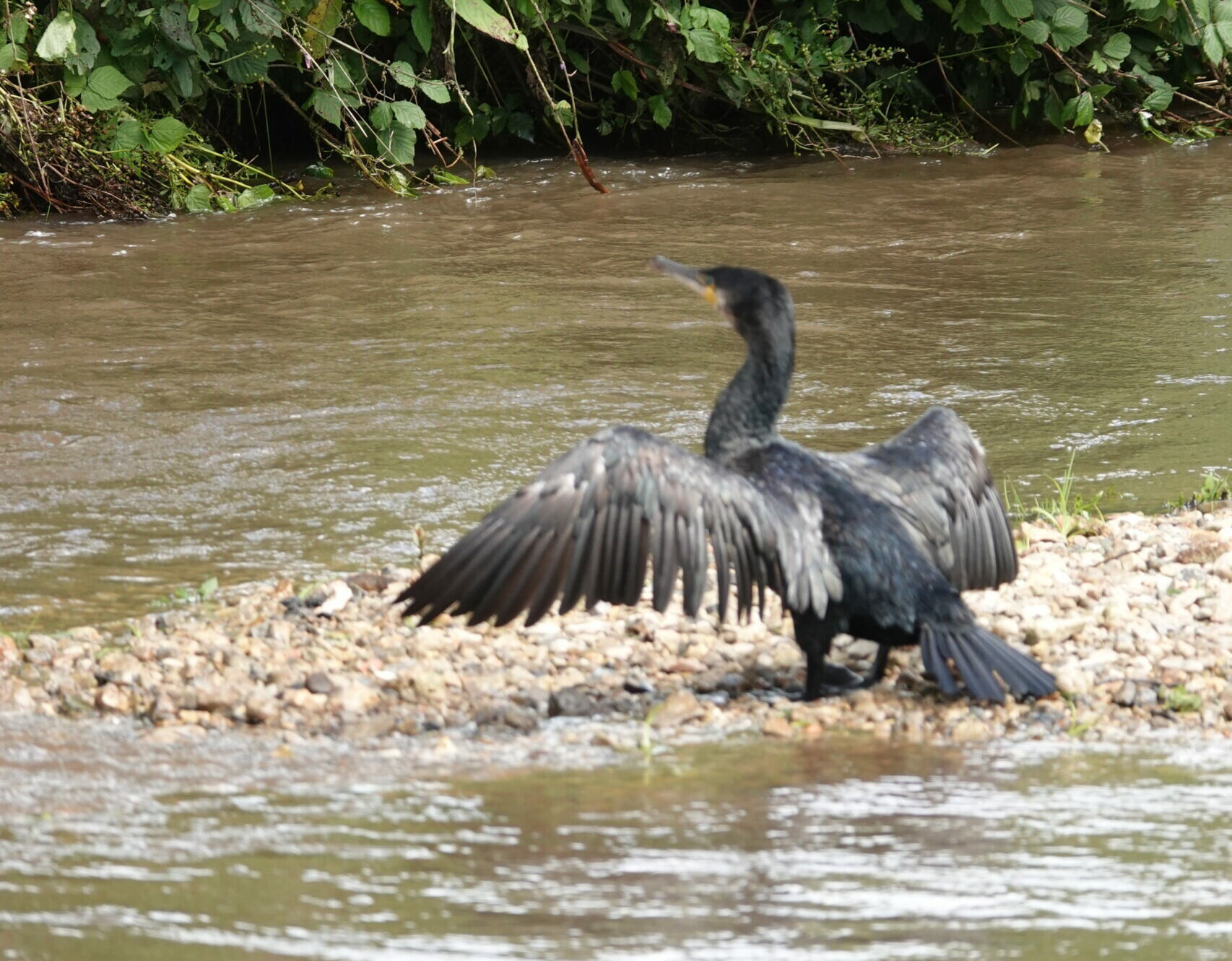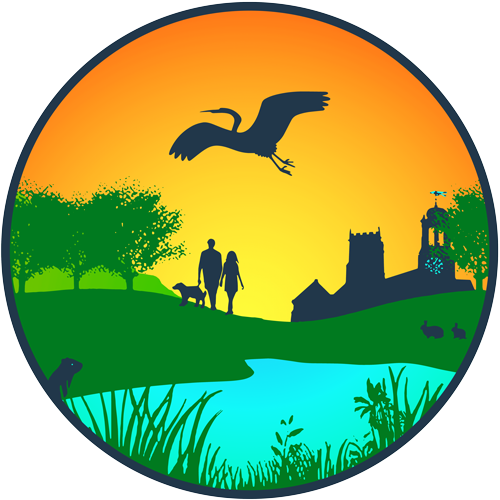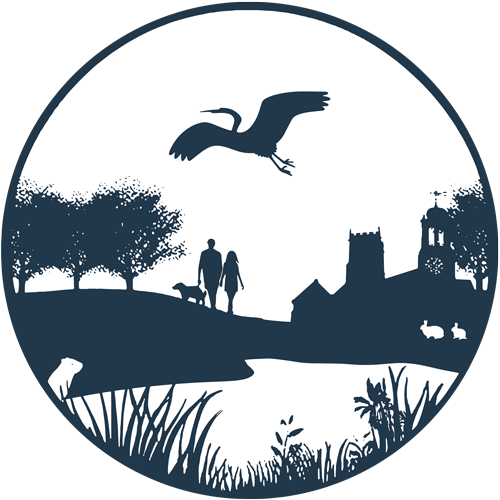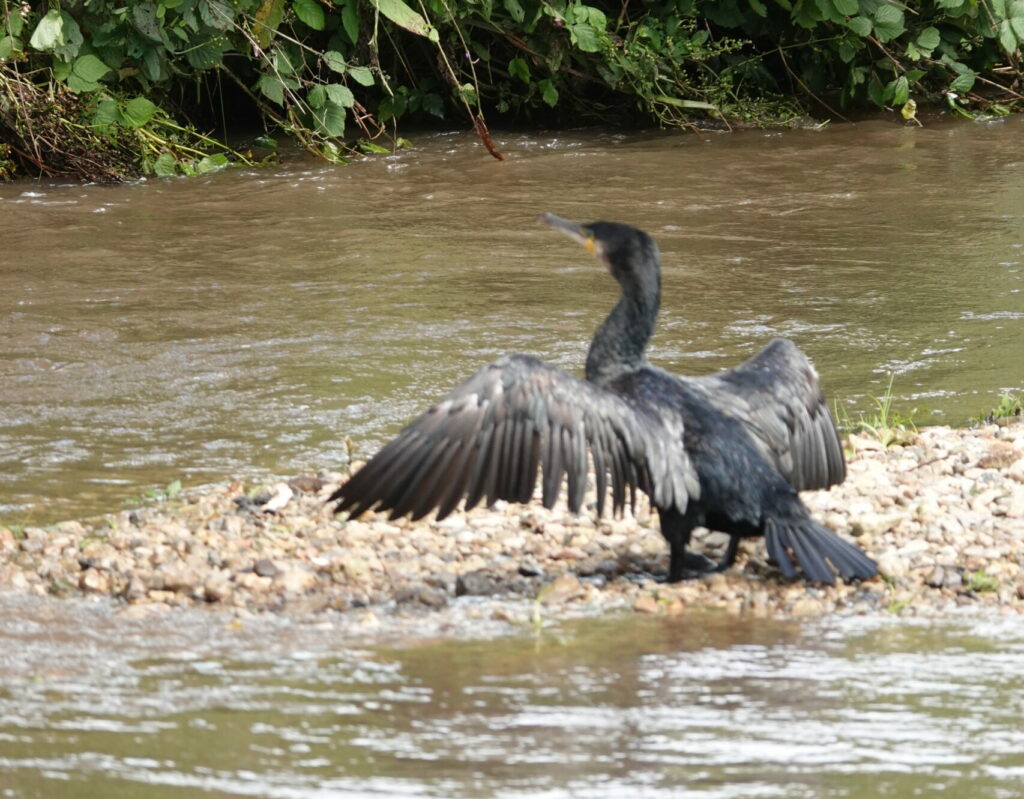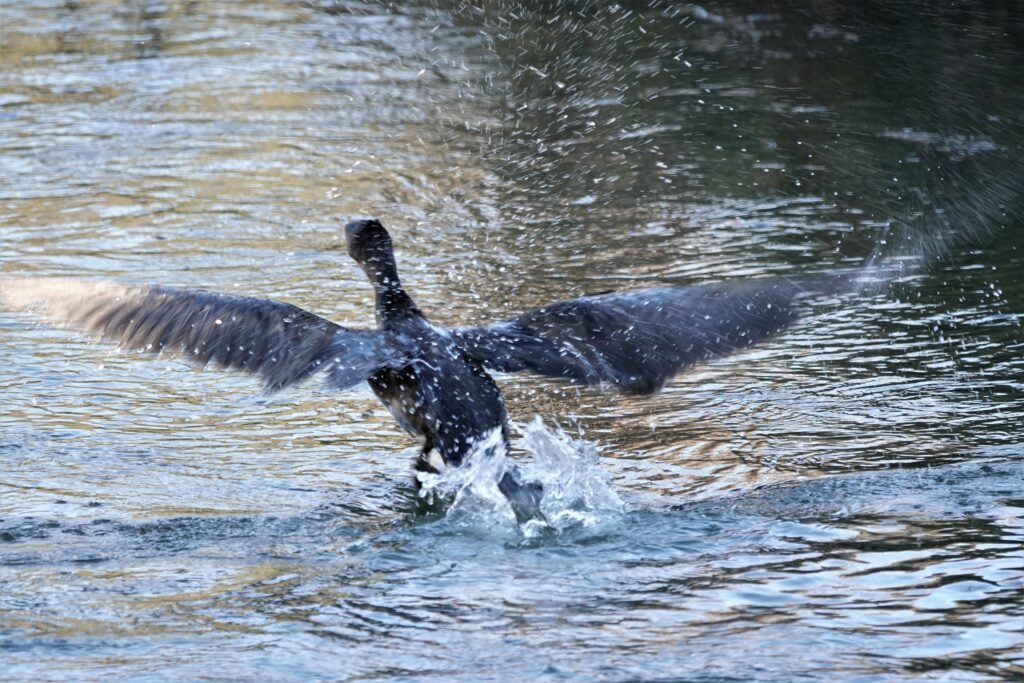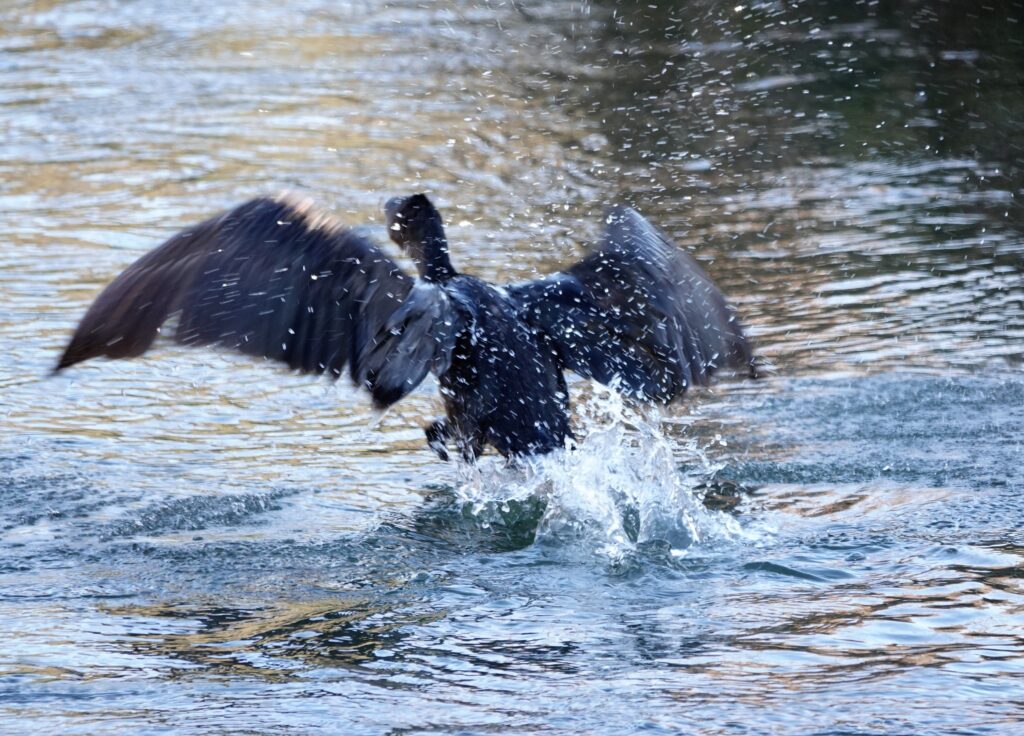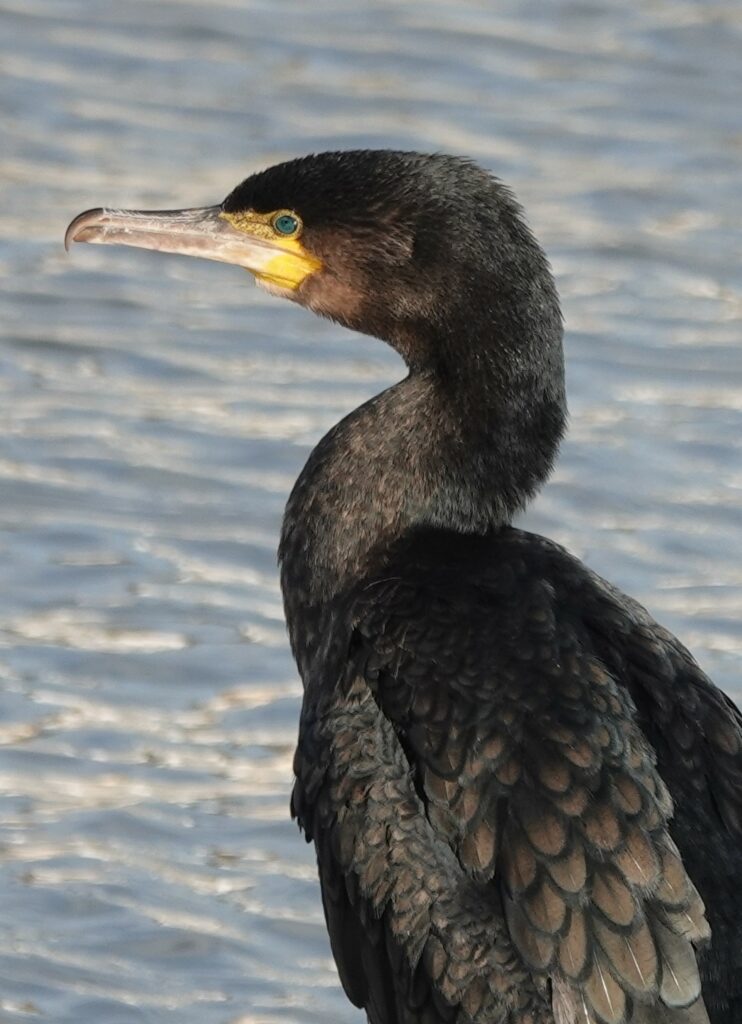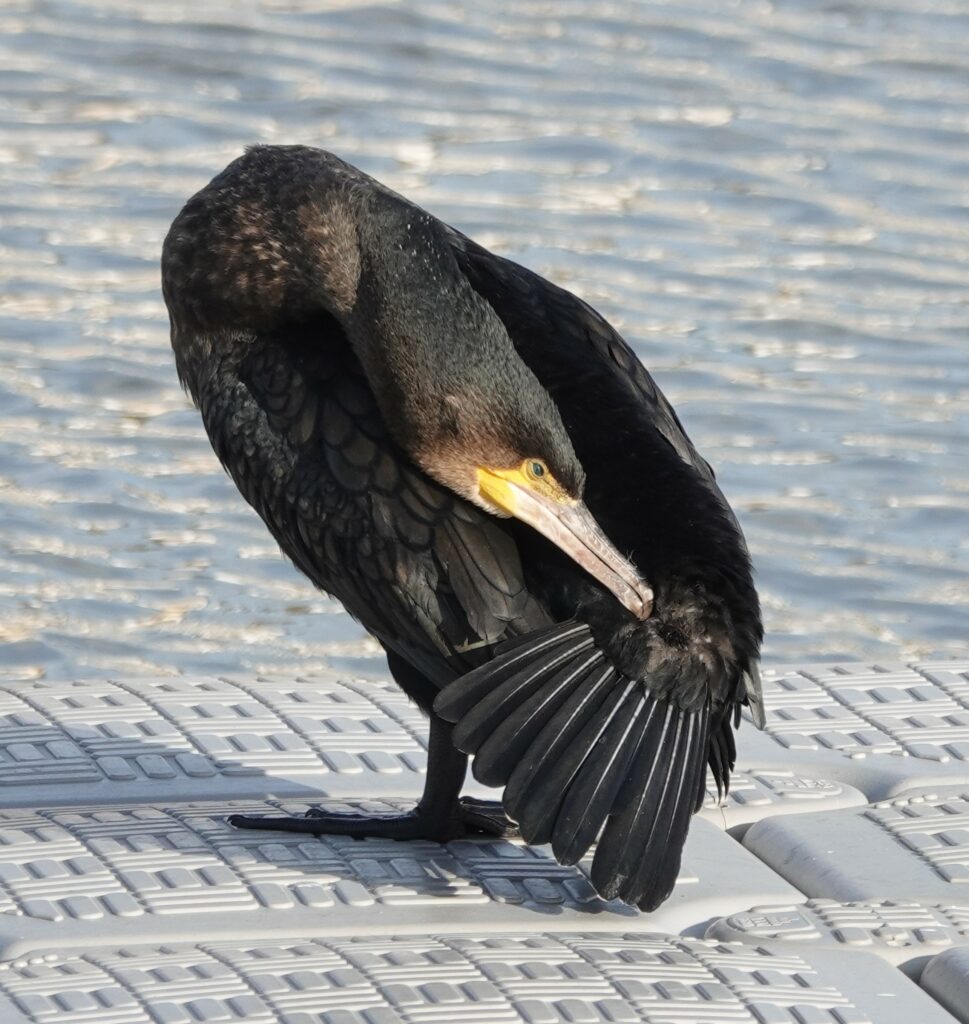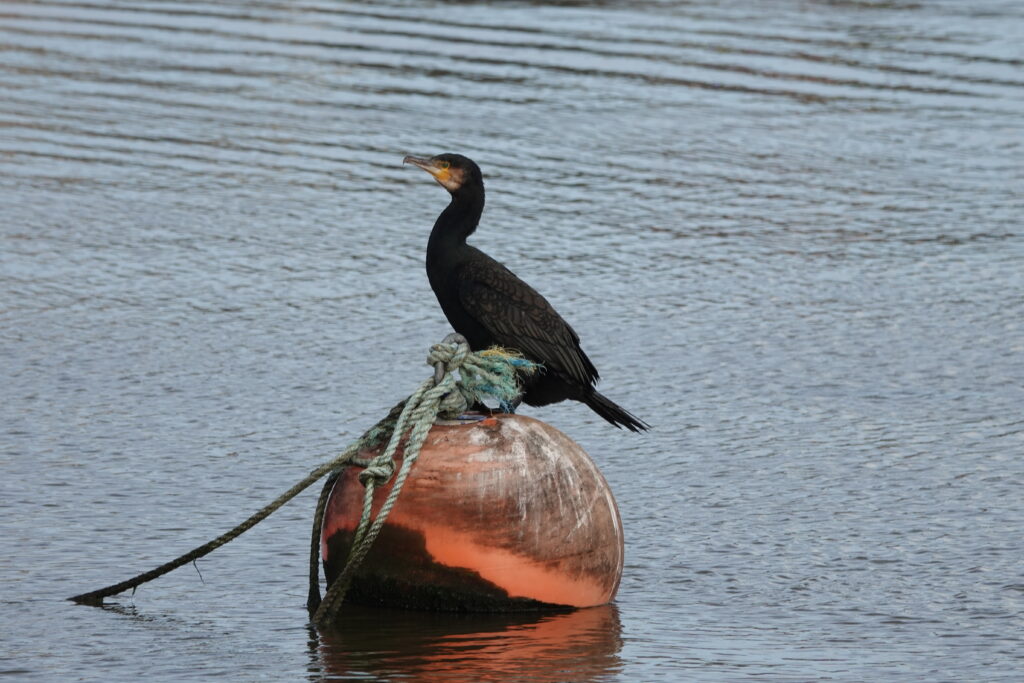Cormorant
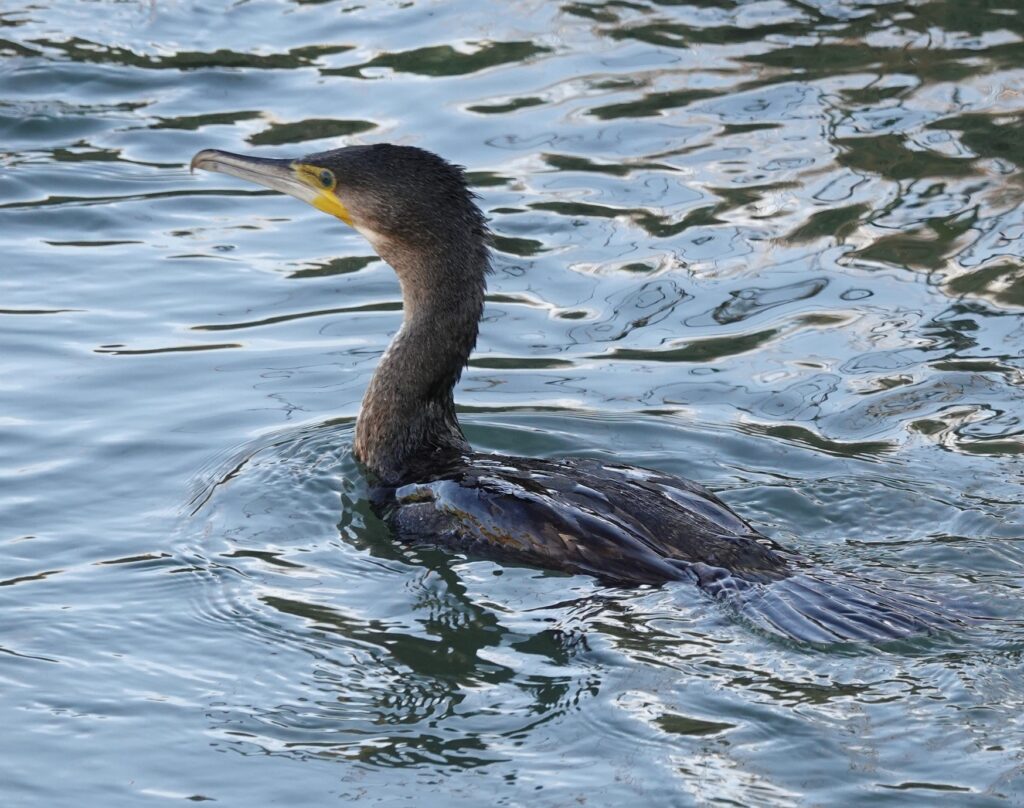
Cormorants are large, water birds.
They appear black but their feathers are actually brown with black edges. They often have pale skin at the base of their long yellow beaks and dark green eyes. Adults have a white patch on the thigh during the summer breeding season They feed on fish, which they catch with their long, hook-tipped bills whilst swimming underwater. . they stay under for less than half a minute, swimming about 20-30 feet below the surface.
The Cormorant swallows fish head first. This way it forces the fins down and the narrow esophagus doesn’t allow the fins to stick out and get stuck. The scales on the fish also flatten to make it more slippery and easier to swallow.
Often seen with wings spread wide. Could be for drying but possibly to maintain enough space around it to take off quickly if threatened. Or it could be to help the birds warm up after a dip into cool water. The dark feathers absorb heat, particularly on a sunny day. Other theories include that the wings spread position helps the feathers realign themselves correctly after a swim.
In the Far East, some fishermen make use of the cormorant’s fishing expertise, by training it to catch fish for them. A collar and lead is attached to the bird’s neck and the collar is tightened enough to prevent the cormorant from swallowing a captured fish. The fisherman retrieves the fish from the bird’s beak, only loosening its collar now and then to allow it to swallow a fish for itself.
Main Image
